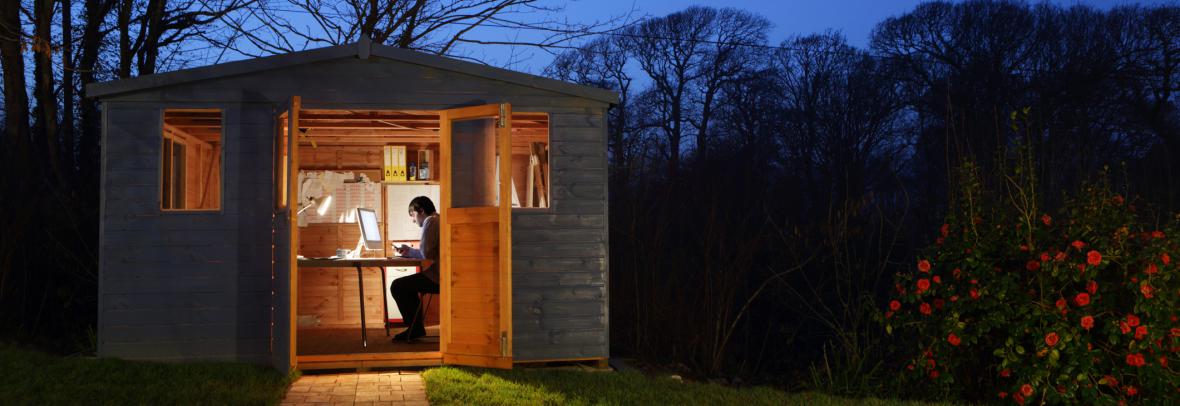
Making a Shed Work for You
Sheds can store gear or become functional spaces. Choose the right type, size and materials for your needs, and check local laws before building.
NEW YORK — As you start planning to fit your tools, gardening gear and outdoor decor into a small space, a new shed can be a tempting option as a late fall job or a plan for early spring. With proper planning, you can make the most of an outdoor storage project.
The average shed costs about $3,500 to install, but you could pay as little as about $1,000 or well past $15,000 for custom work, depending on your needs.
Building a shed can be as simple as assembling a basic prefab kit or as involved as commissioning a fully custom outbuilding with electricity, plumbing and high-end finishes. The right choice depends on how you plan to use it, the space you have and the longevity you want.
Comparing shed types
Prefabricated sheds are the most straightforward option. When delivered in panels or even fully assembled, they can be installed in a single day. They come in standard sizes, with limited customization, and often last a decade or so with regular upkeep. They're a solid pick for storing lawn equipment, tools and bikes or even creating a small hobby space without the fuss of a long build.
Custom sheds, on the other hand, offer maximum flexibility. You can design the layout, roofline, window placement and materials to match your home or specific needs. They typically last decades and can be tailored for anything from a garden workspace to a home office, guest quarters or small studio. However, you'll invest a lot more time in planning and construction to get it right.
Selecting size and materials
Size has a direct impact on your shed project. Smaller sheds are great for tight yards and can store basic tools, bicycles and seasonal gear. Medium sizes, such as 10by-10, give you enough space for a lawn tractor, workbench and larger equipment without dominating your yard. Larger builds open the door for recreational vehicles, small boats or living space. The larger the shed, the more critical it is to plan for foundation type, placement and access.
Material choice is another major factor. Wood remains popular for its classic look and customizability, and it can be painted or stained to match your home. Metal sheds are durable, insect-proof and low-maintenance, though they can heat up in summer without insulation. Plastic and resin sheds are lightweight, rot-proof and quick to assemble.
No matter the shed type, a proper foundation is essential. Options range from simple gravel pads and skid systems to poured concrete slabs. A well-leveled, well-drained base keeps your shed stable and dry. Roofing is equally important: asphalt shingles are affordable and widely available, while metal roofs last longer and shed snow easily, but require professional installation.
Additional considerations
If you're adding power or water, you'll need to plan for electricians and plumbers, as well as insulation to make the space comfortable year-round. Even small upgrades such as windows, skylights or gutters can improve usability but also add complexity and cost.
Local regulations can shape your project more than you might expect. Many municipalities require permits for larger sheds or have setback rules dictating how close you can build to property lines. Homeowners associations may have design restrictions. Checking these early can save you time and frustration.
If your goal is to save money without sacrificing quality, focus on smart design and material choices. A single-sloped roof uses less material than a gable roof. Smaller footprints cost less to build and maintain. Skipping unnecessary windows or keeping the layout simple reduces cutting and waste. A shed professional can help you figure out the best options for you.
Ultimately, the best shed for you is one that meets your functional needs, fits comfortably in your space and holds up well in your climate. Whether you're putting up a modest prefab for garden tools or investing in a multi-purpose structure for work and leisure, good planning pays off. With the right prep, your shed can be more than just storage; it can be a long-lasting, useful and attractive addition to your property.
© Copyright 2025, Independent Tribune, Kannapolis, NC
